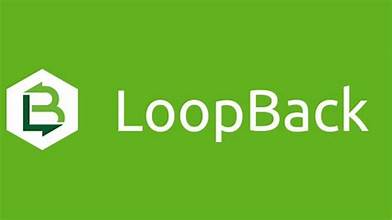Introduction
The Fundamentals of APIs and Their Functionality
- Scalar types
- Web architecture patterns
REST Overview
- Get option
- Pull option
- Post option
- Delete option
Preparing the Development Environment
- Installing and configuring LoopBack
Models and Data Sources
- Creating and testing a model
- Connecting to data sources
Authentication
- Authenticating endpoints
- Creating a public route
- Using ACL
- Adding login
Security
- Locking down REST web services
Summary and Conclusion
Duration
21 hours (usually 3 days including breaks)
Requirements
- An understanding of machine learning principles
- Python programming experience
Audience
Overview
MXNet is a flexible, open-source Deep Learning library that is popular for research prototyping and production. Together with the high-level Gluon API interface, Apache MXNet is a powerful alternative to TensorFlow and PyTorch.
This instructor-led, live training (online or onsite) is aimed at data scientists who wish to use Apache MXNet to build and deploy a deep learning model for image recognition.
By the end of this training, participants will be able to:
- Install and configure Apache MXNet and its components.
- Understand MXNet’s architecture and data structures.
- Use Apache MXNet’s low-level and high-level APIs to efficiently build neural networks.
- Build a convolutional neural network for image classification.
Format of the Course
- Interactive lecture and discussion.
- Lots of exercises and practice.
- Hands-on implementation in a live-lab environment.
Course Customization Options
- To request a customized training for this course, please contact us to arrange.
Course Outline
Introduction
Deep Learning Principles and the Deep Learning Ecosystem
- Tensors, Multi-layer Perceptron, Convolutional Neural Networks, and Recurrent Neural Networks
- Computer Vision vs Natural Language Processing
Overview of Apache MXNet Features and Architecture
- Apache MXNet Compenents
- Gluon API interface
- Overview of GPUs and model parallelism
- Symbolic and imperative programming
Setup
- Choosing a Deployment Environment (On-Premise, Public Cloud, etc.)
- Installing Apache MXNet
Working with Data
- Reading in Data
- Validating Data
- Manipulating Data
Developing a Deep Learning Model
- Creating a Model
- Training a Model
- Optimizing the Model
Deploying the Model
- Predicting with a Pre-trained Model
- Integrating the Model into an Application
MXNet Security Best Practices
Troubleshooting
Summary and Conclusion
Duration
14 hours (usually 2 days including breaks)
Requirements
- Basic knowledge of data mining process and techniques
Audience
- Data Analysts
- Data Scientists
Overview
Waikato Environment for Knowledge Analysis (Weka) is an open-source data mining visualization software. It provides a collection of machine learning algorithms for data preparation, classification, clustering, and other data mining activities.
This instructor-led, live training (online or onsite) is aimed at beginner to intermediate-level data analysts and data scientists who wish to use Weka to perform data mining tasks.
By the end of this training, participants will be able to:
- Install and configure Weka.
- Understand the Weka environment and workbench.
- Perform data mining tasks using Weka.
Format of the Course
- Interactive lecture and discussion.
- Lots of exercises and practice.
- Hands-on implementation in a live-lab environment.
Course Customization Options
- To request a customized training for this course, please contact us to arrange.
Course Outline
Introduction
- Overview of Weka
- Understanding the data mining process
Getting Started
- Installing and configuring Weka
- Understanding the Weka UI
- Setting up the environment and project
- Exploring the Weka workbench
- Loading and Exploring the dataset
Implementing Regression Models
- Understanding the different regression models
- Processing and saving processed data
- Evaluating a model using cross-validation
- Serializing and visualizing a decision tree model
Implementing Classification Models
- Understanding feature selection and data processing
- Building and evaluating classification models
- Building and visualizing a decision tree model
- Encoding text data in numeric form
- Performing classification on text data
Implementing Clustering Models
- Understanding K-means clustering
- Normalizing and visualizing data
- Performing K-means clustering
- Performing hierarchical clustering
- Performing EM clustering
Deploying a Weka Model
Troubleshooting
Summary and Next Steps


